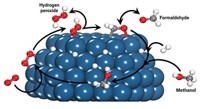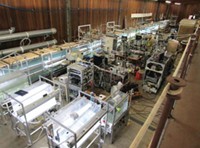Advertisement
Grab your lab coat. Let's get started
Welcome!
Welcome!
Create an account below to get 6 C&EN articles per month, receive newsletters and more - all free.
It seems this is your first time logging in online. Please enter the following information to continue.
As an ACS member you automatically get access to this site. All we need is few more details to create your reading experience.
Not you? Sign in with a different account.
Not you? Sign in with a different account.
ERROR 1
ERROR 1
ERROR 2
ERROR 2
ERROR 2
ERROR 2
ERROR 2
Password and Confirm password must match.
If you have an ACS member number, please enter it here so we can link this account to your membership. (optional)
ERROR 2
ACS values your privacy. By submitting your information, you are gaining access to C&EN and subscribing to our weekly newsletter. We use the information you provide to make your reading experience better, and we will never sell your data to third party members.
Environment
Aerosols Expand Through Surface Reactions
Results implicate heterogeneous processes in particle growth mechanism
by Jyllian Kemsley
April 23, 2012
| A version of this story appeared in
Volume 90, Issue 17
Reactions on the surface of airborne particles may explain why they grow faster than traditional models predict (Proc. Natl. Acad. Sci. USA, DOI: 10.1073/pnas.1120593109). Atmospheric aerosols affect precipitation and climate, and they are also associated with adverse health effects. Whereas primary aerosols are emitted directly into the air, secondary aerosols form in the atmosphere. Traditionally, scientists believed that secondary organic aerosols grew through a mechanism in which volatile organic compounds reacted with atmospheric oxidants, making the compounds less volatile and able to condense onto particles. Now, a group led by Barbara D’Anna of Claude Bernard University, in Lyon, France, sees evidence for aerosol growth through light-induced heterogeneous reactions on the particles’ surfaces. Using a laboratory flow-tube reactor with volatile terpenes and seed particles containing humic acid, a component of soil formed through biodegradation of organic matter, they found that the particles appeared to trap and oxidize the terpenes, probably through radical-producing photoreactions of humic acid. The experimental particle growth rates match those observed in field studies, suggesting that the heterogeneous reaction mechanism should be included in atmospheric modeling, the researchers say.





Join the conversation
Contact the reporter
Submit a Letter to the Editor for publication
Engage with us on Twitter